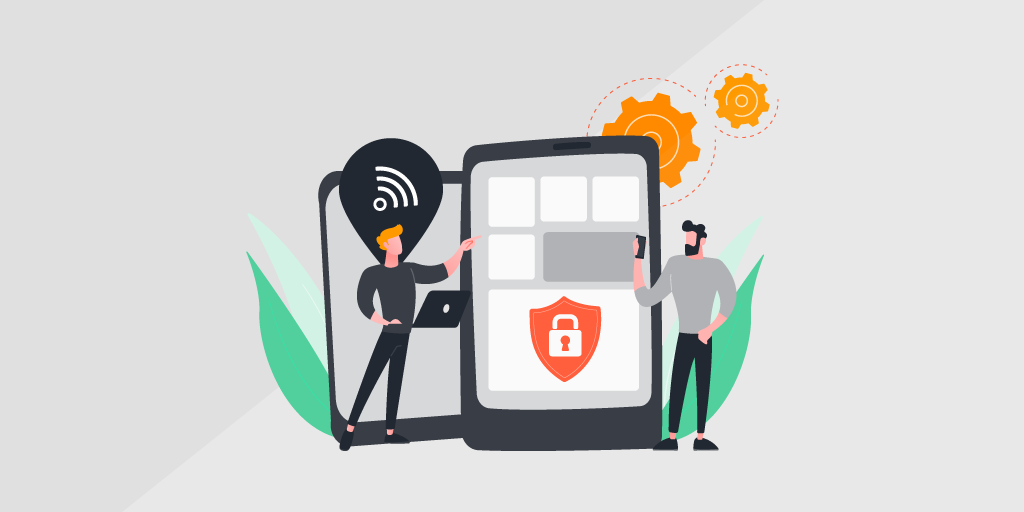In today’s digital landscape, mobile devices have become essential tools for business operations. With the increasing use of Android devices in the workplace, organizations must prioritize mobile device management (MDM) to safeguard their data and ensure security. This article outlines best practices for mastering Android Mobile Device Management, enabling businesses to protect their assets while enhancing productivity.
Understanding Mobile Device Management (MDM)
Mobile Device Management (MDM) refers to the software solutions and strategies used to manage and secure mobile devices in an organization. MDM enables IT departments to remotely control, monitor, and secure employee devices, ensuring compliance with company policies and protecting sensitive data.
Key Benefits of MDM:- Enhanced Security: Protects against data breaches and unauthorized access.
- Device Tracking: Monitors device usage and location.
- Remote Wipe: Allows for the remote deletion of data from lost or stolen devices.
- Policy Enforcement: Ensures compliance with security protocols.
Choose the Right MDM Solution
Selecting an appropriate MDM solution is critical for the success of your mobile device management strategy. When evaluating MDM tools, consider the following:
- Compatibility: Ensure the MDM solution is compatible with Android devices and any other operating systems used in your organization.
- Scalability: Choose a solution that can grow with your business and manage an increasing number of devices.
- Ease of Use: The MDM interface should be user-friendly, allowing both IT staff and end-users to navigate easily.
- Support and Updates: Opt for a provider that offers regular updates and reliable customer support.

Implement Strong Security Policies
Developing robust security policies is essential for protecting company data on mobile devices. Best practices include:
a. Password Protection- Enforce Strong Passwords: Require complex passwords for device access and regular updates to minimize unauthorized access.
- Biometric Authentication: Utilize fingerprint or facial recognition features for enhanced security.
- Full Device Encryption: Ensure all data on the device is encrypted, making it inaccessible to unauthorized users.
- Conduct Audits: Perform regular security audits to identify vulnerabilities and ensure compliance with policies.
"At SmartKey, we recognize the critical importance of securing Android devices within business environments. By adopting comprehensive Mobile Device Management (MDM) strategies, we ensure that organizations not only protect their sensitive data but also enhance overall productivity. Our approach prioritizes device security, compliance with industry regulations, and a seamless user experience for IT administrators and employees alike."
Control App Access and Usage
Managing the applications that employees can access is crucial for maintaining security:
a. Whitelisting and Blacklisting- Whitelist Approved Apps: Create a list of approved applications that employees can install to reduce the risk of malware.
- Blacklist Unapproved Apps: Prevent access to applications that could compromise security, such as unauthorized file-sharing apps.
- Encourage Updates: Prompt employees to regularly update applications to ensure they have the latest security patches.
Establish Clear Device Usage Guidelines
Creating clear guidelines for device usage helps mitigate risks associated with mobile devices:
a. Acceptable Use Policy- Develop an Acceptable Use Policy (AUP): Outline the expected behavior for employees when using company devices, including prohibitions on personal use and accessing sensitive data.
- Conduct Training Sessions: Educate employees on best practices for mobile security and the importance of following guidelines.
Utilize Remote Management Features
MDM solutions provide remote management features that enhance security and operational efficiency:
a. Remote Wipe Capability- Immediate Data Removal: Enable IT to remotely wipe data from lost or stolen devices to prevent unauthorized access to sensitive information.
- Remote Lock: Allow IT to lock devices remotely if they are lost, ensuring that data remains secure.
Monitor and Analyze Device Activity
Regular monitoring of device activity helps identify potential security threats:
a. Usage Analytics- Track Usage Patterns: Use analytics tools to monitor device usage and detect unusual behavior that may indicate security breaches.
- Set Up Alerts: Configure alerts for unusual activities, such as multiple failed login attempts or access from unknown locations.
Ensure Compliance with Regulations
Many industries have specific regulations regarding data security. Ensure your MDM strategy complies with relevant laws, such as GDPR or HIPAA, to avoid legal repercussions.
a. Regular Compliance Checks- Conduct Compliance Audits: Schedule regular audits to ensure that your MDM policies adhere to industry regulations and best practices.
Foster a Culture of Security Awareness
Creating a culture of security awareness among employees can significantly reduce risks associated with mobile device usage.
a. Open Communication- Encourage Reporting: Foster an environment where employees feel comfortable reporting security concerns or incidents.
- Ongoing Training: Provide continuous training on the latest security threats and the importance of adhering to policies.
Conclusion
Mastering Android Mobile Device Management is crucial for enhancing business security in an increasingly mobile-centric world. By implementing robust security policies, selecting the right MDM solution, and fostering a culture of security awareness, organizations can protect their data while empowering employees to leverage mobile technology effectively. As businesses continue to adapt to the digital landscape, a comprehensive MDM strategy will be a key factor in achieving sustained growth and security.


Comments (4)
John | October 27, 2024
This article nails it when it comes to Android MDM best practices. The focus on both security and operational efficiency is spot-on. Features like remote wipe and app whitelisting are critical for protecting sensitive business data. Our team at TechSecure Solutions has implemented similar strategies, and it's great to see the importance of security in the mobile workforce being highlighted.
Sarah | October 30, 2024
The emphasis on creating a culture of security awareness is something that resonates deeply with our approach at CyberGuard Inc. MDM is more than just implementing software—it's about ensuring employees understand and follow security protocols. Regular training and compliance checks are crucial steps toward maintaining a secure business environment.
Leave a Comment